I recently bought a suite of photo “enhancement” apps from MacPhun. I use the word enhancement in quotes because I feel conflicted about such tools. They make it easy to inflict an endless array of cheesy effects on unsuspecting photos.
The “to app or not to app” debate reminds me of an episode from the novel, Diva, by Delacorta (Daniel Odier), which also appears as a scene in the movie of the same name. The opera singer, Cynthia Hawkins, is giving a statement to the press when a reporter asks why she refuses to record her performances. She answers that the performance is a special moment which a recording can never capture. She then mentions Glenn Gould by way of contrast. Gould famously refused to perform and devoted himself, instead, to the post-production process.
A analogous debate has raged in the world of photography since the discovery that film negatives could be manipulated. But what was once an esoteric art practised by a handful of darkroom geeks is now accessible to anyone who owns a smart phone. And so the debate has gained new force. Purists insist that everything rests on the process; their aim is a Platonic photograph captured fully formed in camera without the need for post-processing manipulation. The rest of us aren’t so skillful or we’re lazy or we like to play with all the latest digital tools. We draw an analogy to Glenn Gould and wonder: if the object is to produce a compelling image, what difference does it make which process we use to create the image?
My position in this debate? I begin with the observation that recent developments in camera technology make photography almost idiot proof. Auto-focus has become blazingly fast. In fact, it’s possible to dispense with focus altogether. The Lytro Illum allows you to take your photo and decide what to pull into focus after the fact. Add to that the proposed technology that would allow you to take perfect HDR images every time, and it becomes impossible to take a technically bad photo. Stripped of technical challenges, all that remains for photography are creative challenges. Composition and post-processing.
Maybe purists will insist on using old cameras so they can claim bragging rights for all the technical challenges they’ve overcome. But for those who adopt new tools and still want to call themselves purists, all that remains to them of creativity in the process is composition. Personally, I find that unnecessarily limiting. I like to play.
With a name like MacPhun, you get the feeling this app developer panders to people who like to play (especially if they are Mac users). Each of the tools in the suite can function as a plugin in Adobe Lightroom and Photoshop. Although they aren’t non-destructive editing tools as you’d find in Lightroom, they get around this problem by automatically making a copy of your image source file and editing the copy instead. (The downside of this is that a copy in .tif format of a 50 megapixel image can be as large as 250 Mb and I begrudge the space.)
What follows are before and after shots to illustrate some MacPhun possibilities using 4 of the 5 tools. (The 5th is SnapHeal Pro which you don’t need if you have Photoshop but would be useful for people using other image editing software.)
First, let’s play with Tonality Pro, an app for conversion to black and white. To illustrate, here’s a shot of a horse eating grass framed by another horse eating grass. It’s compositionally interesting, but not a great shot because I was facing the technical challenge of shooting into the shadow side of a dark subject. But convert it black and white and use the handy slider to reduce the shadow and the result is vastly improved.
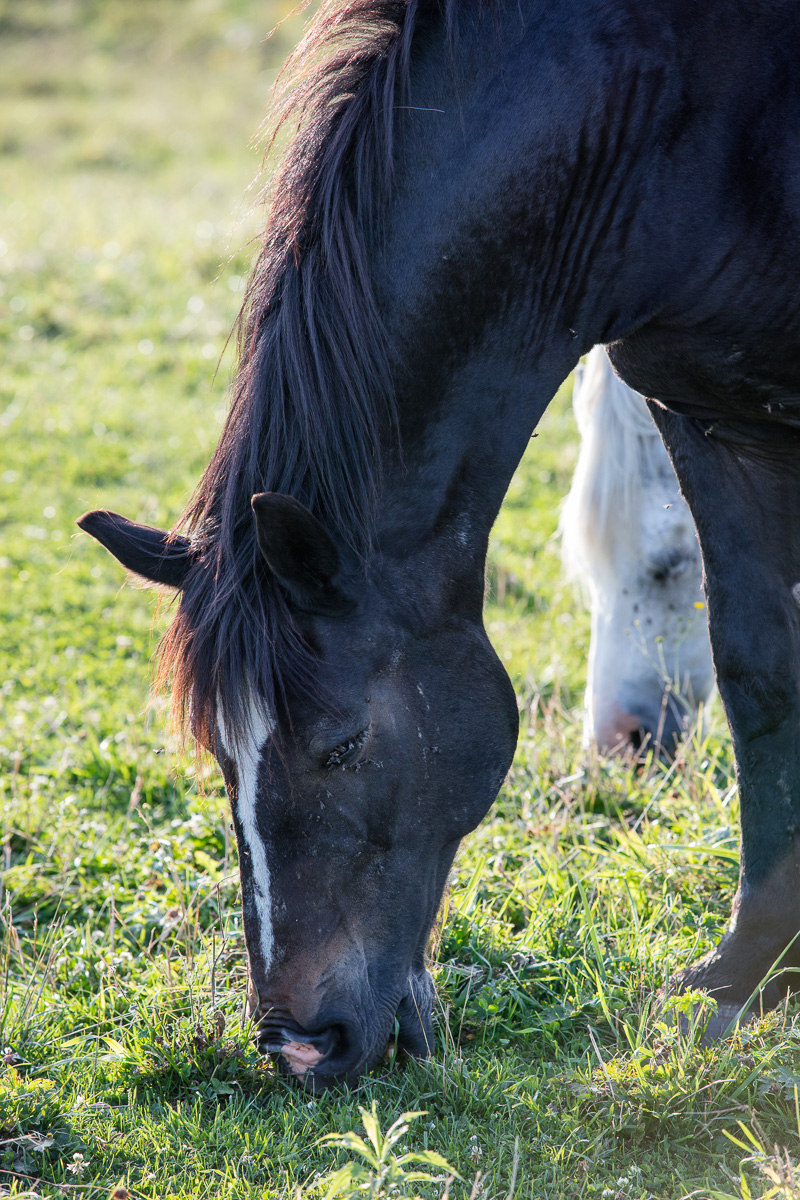
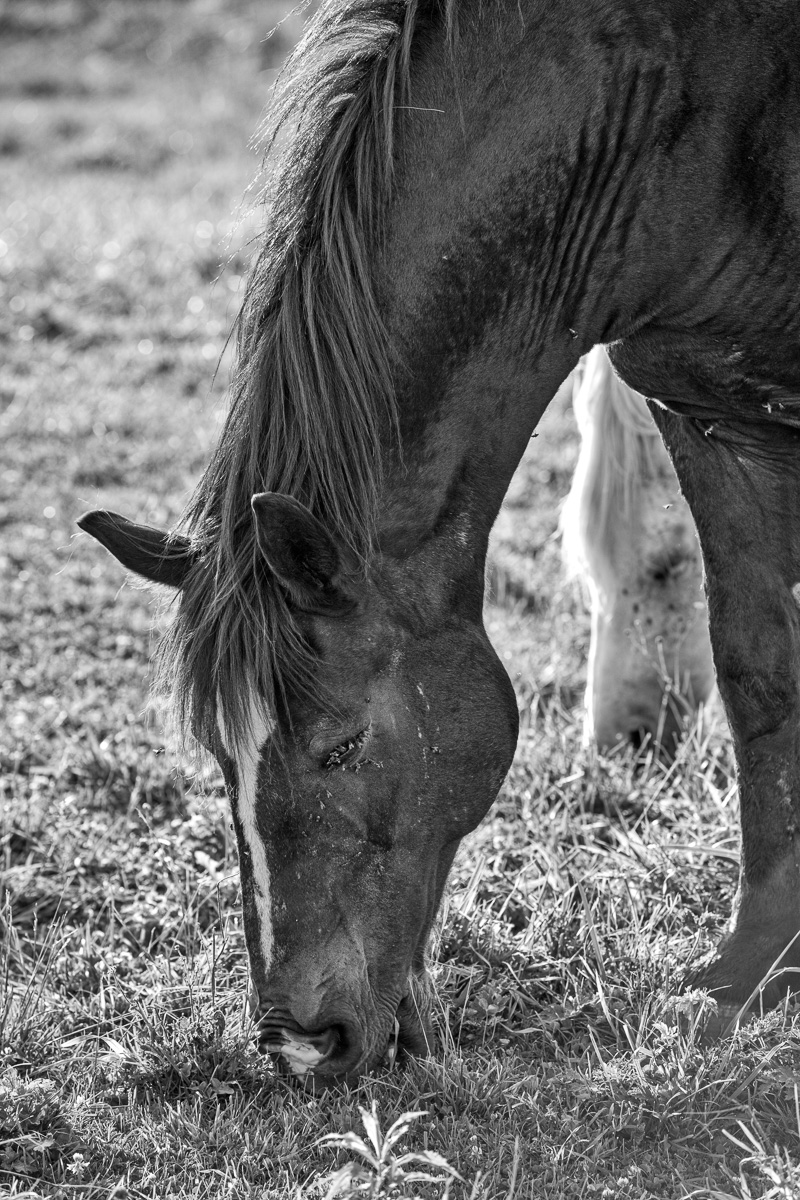
Next are a couple samples using Focus Pro. In the first, I apply a tilt-shift effect to a rooftop scene in Paris. In a way, Focus Pro allows you to simulate the Lytro Illum camera. If you shoot with a small enough aperture so that most of the image is in focus, then that gives you a lot to play with in post-processing. In this case, I angled the plane of the tilt from bottom left third to top right corner. It produces the “toy town” effect, especially in the trees, that is characteristic of tilt shift lenses.
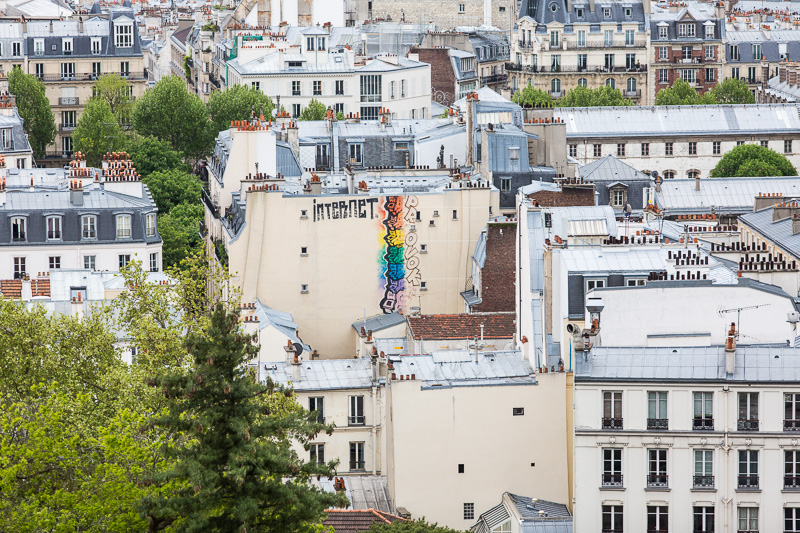
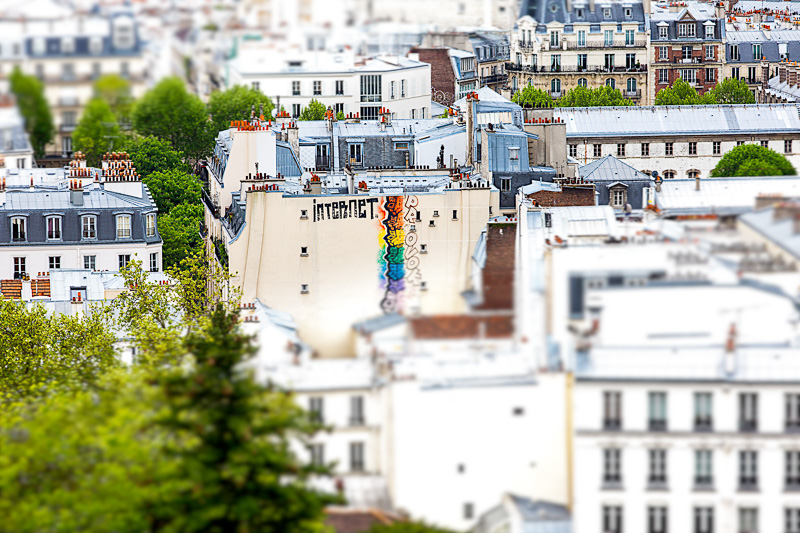
I used Focus Pro to try a different effect with an image I took last weekend at Toronto’s Buskerfest. I mask the woman in the foreground, then give everything else a motion blur. Again, what makes it work is the fact that I shot the source image with a narrow aperture – f/11 – so I could start with most everything in focus.
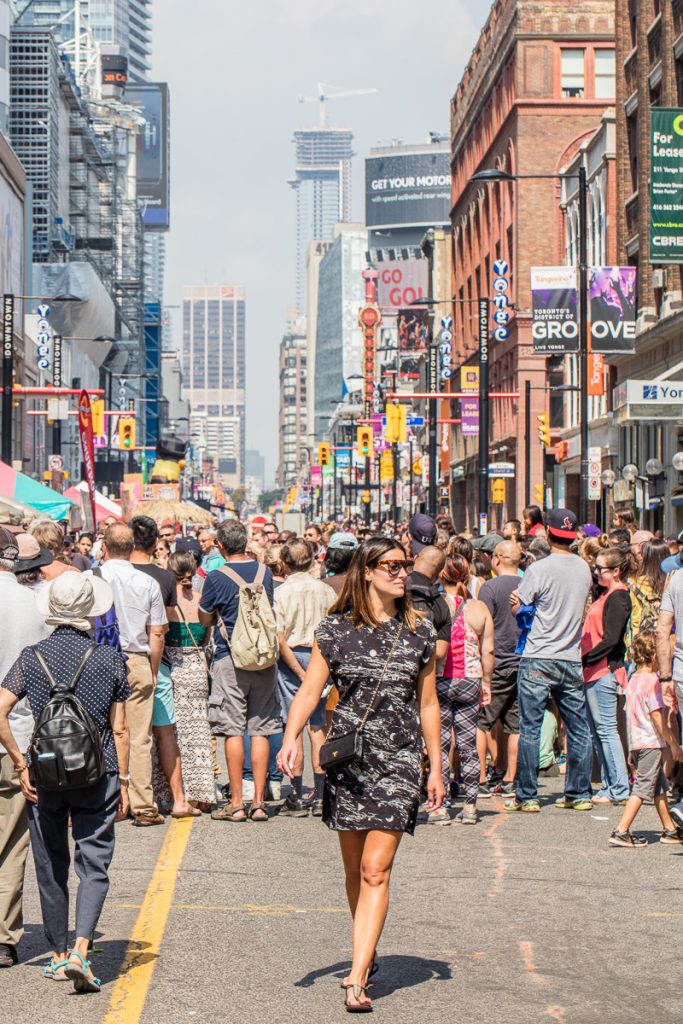
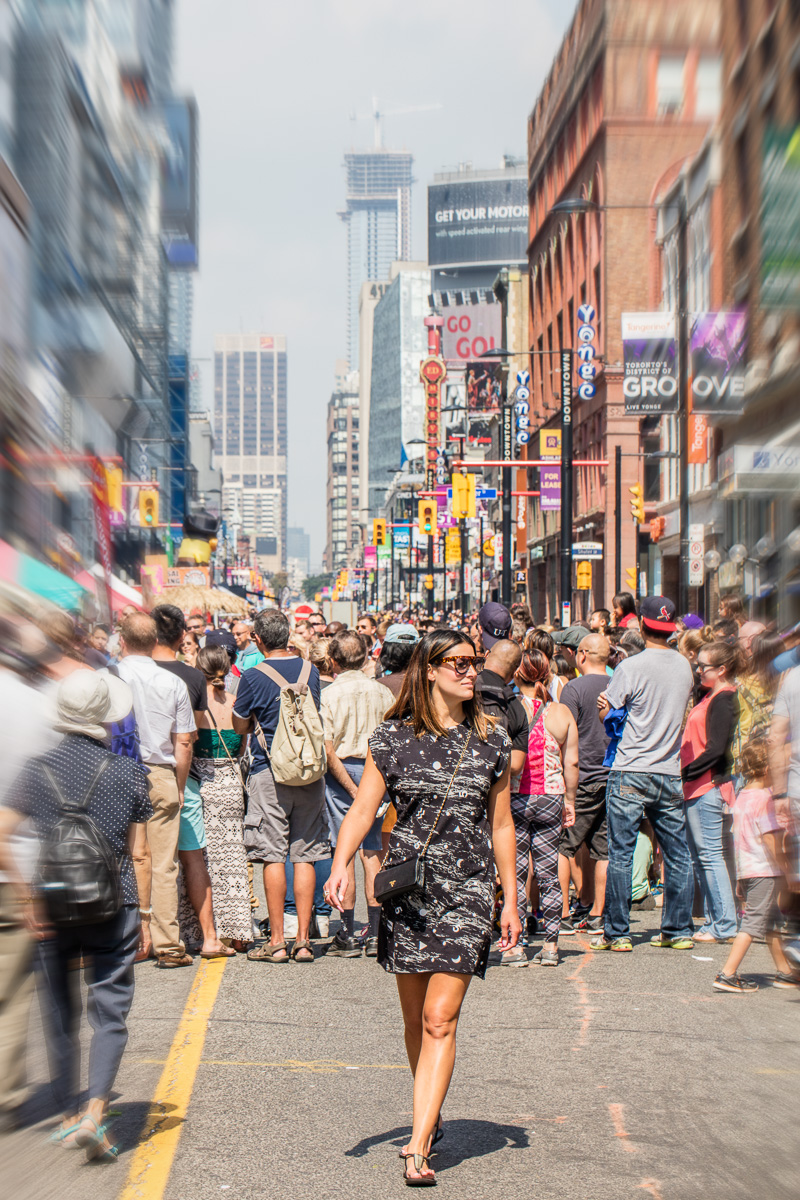
Intensify Pro is probably the most dangerous of the apps because it’s the one with all the cheesy HDR possibilities. Use with moderation. I’ve applied a moderate “punch” to a photo I took during this year’s Pride celebrations. It brings out the colours in the umbrellas and their reflections in the wet pavement. Too much? Maybe. The app also allows for black and white conversion.
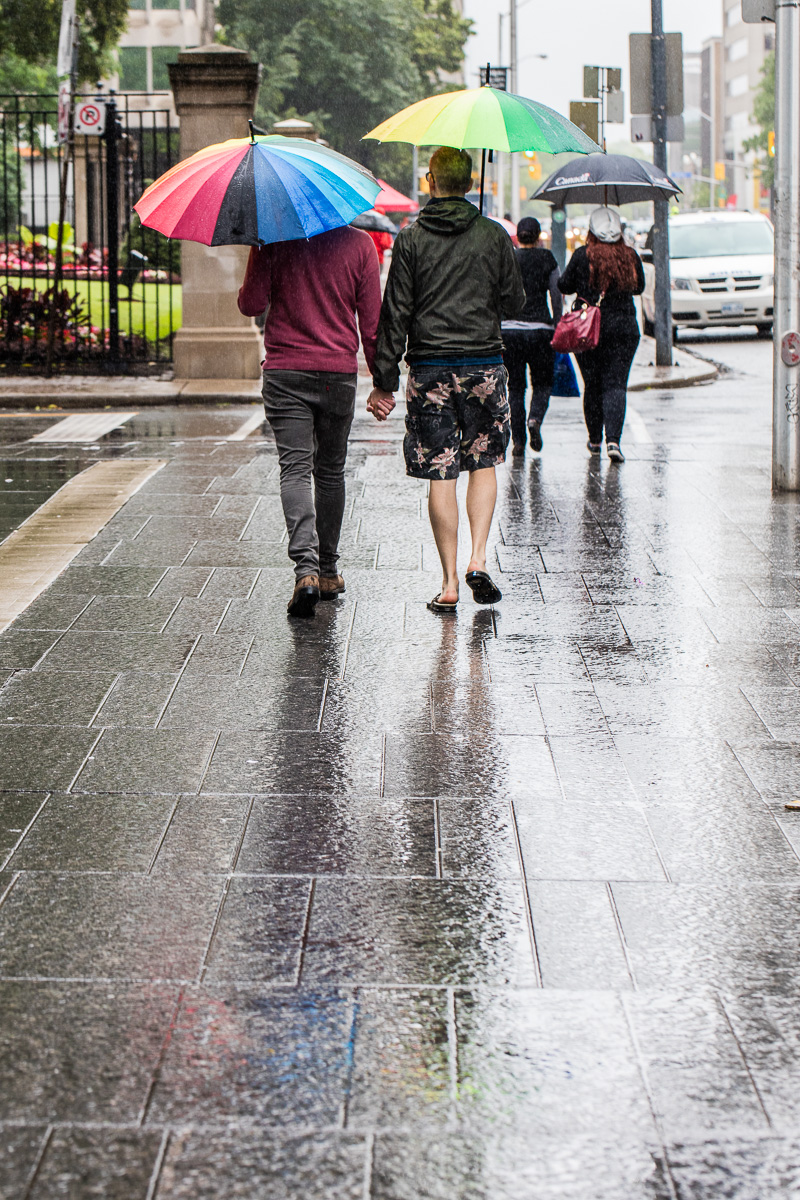
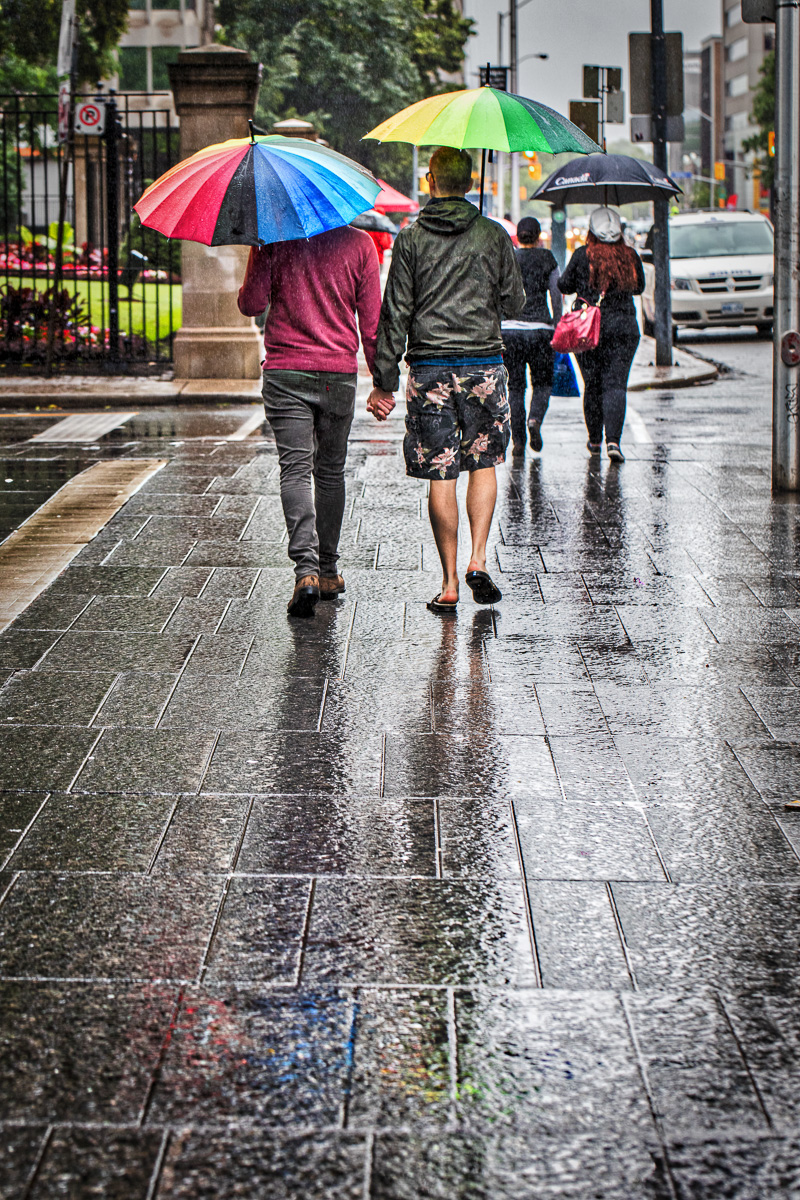
Finally, a sample using Noiseless Pro, a tool for reducing (or increasing) noise. I shot these fireworks from Ward Island across the Toronto Harbour at the end of the PanAm Games. I was shooting at ISO 1250. (Despite Canon’s advertising, I find the 5DS doesn’t handle low light as well as other DSLRs, not even as well as the Mark III.) I reduce the noise in the sky, then use Intensify Pro to give the colours some punch.
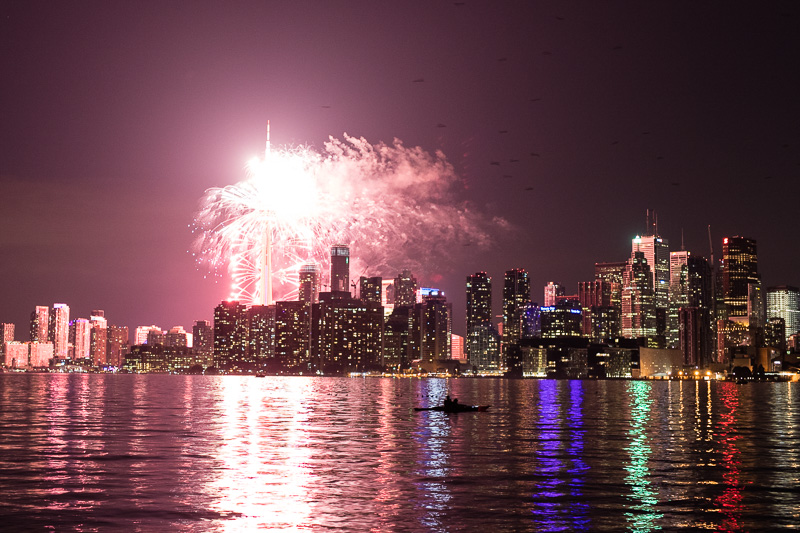
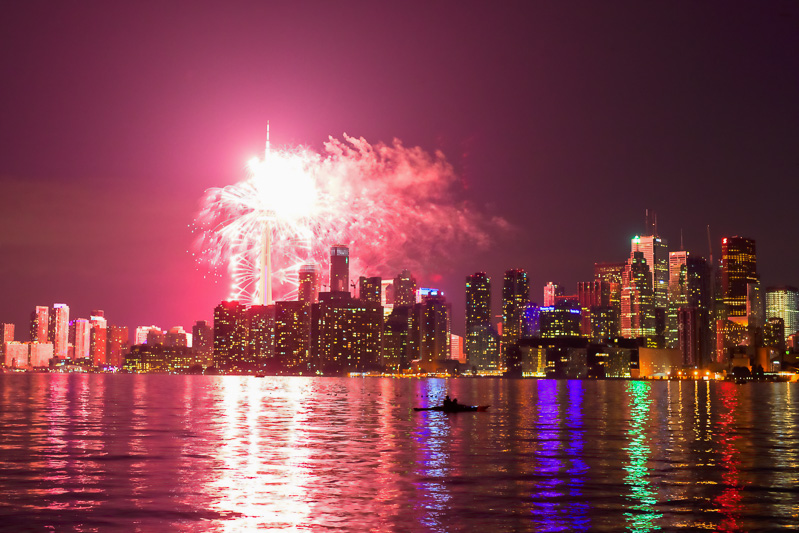
Bottom line: it’s a decent suite and works effectively (and efficiently) as a plugin to Adobe products. If you have self-control, it can be applied to make subtle enhancements to your images.
You may not need the full suite. SnapHeal seems unnecessary. There are black and white conversion and de-noisifying tools in Intensify Pro so you can probably dispense with Tonality Pro and Noiseless Pro. All the apps are available on a trial basis, so you can judge based on your own needs.